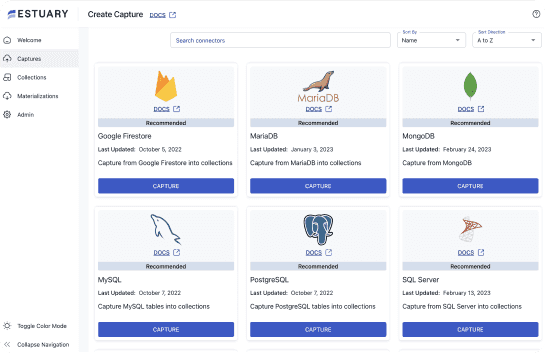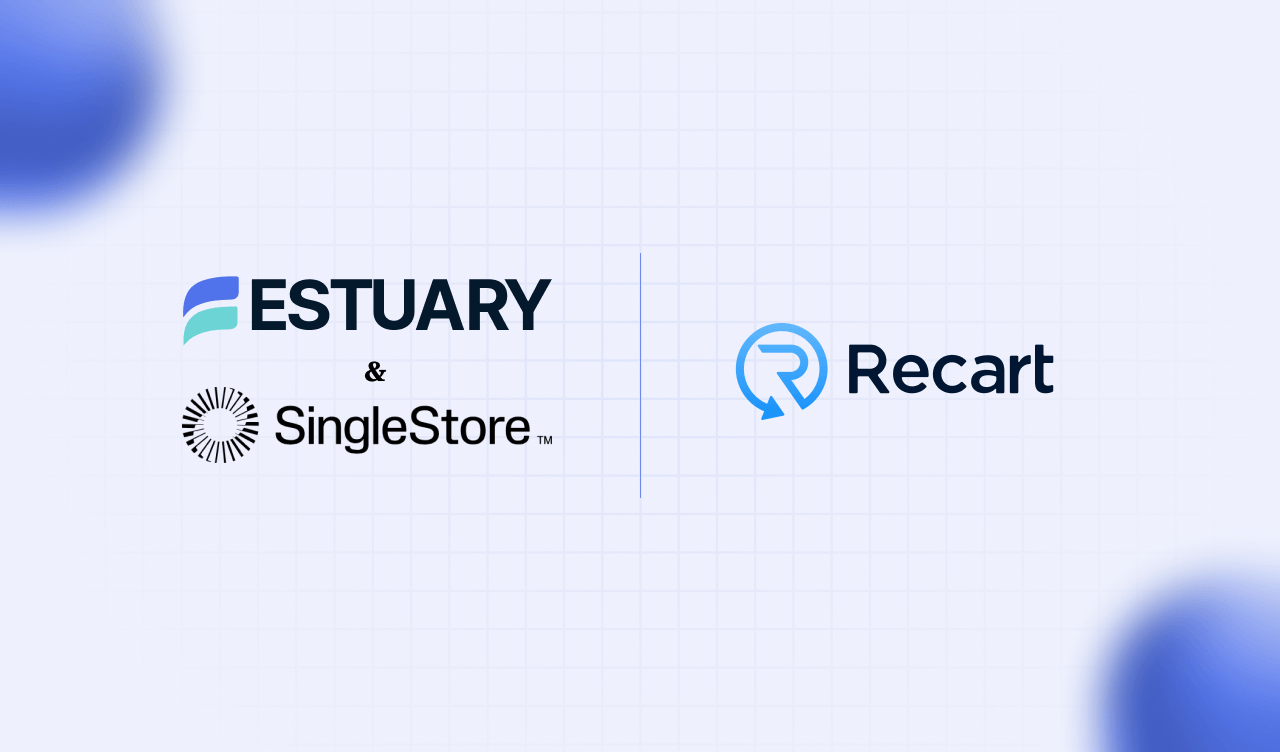Recart Powers Real-Time Segmentation and Analytics with Estuary and SingleStore


Location
Budapest, Hungary

Industry
E-commerce Marketing Technology

Goals
Recart needed scalable, real-time data infrastructure to power instant customer segmentation, reduce processing latency, and unify analytics for users and internal teams.
Summary
With over 500 million monthly transactions, Recart needed a modern, real-time data infrastructure to support fast segmentation logic, real-time reporting, and internal operational dashboards. Their existing architecture—relying heavily on MongoDB and webhook-based pipelines—was holding them back.
By adopting Estuary for real-time data synchronization and SingleStore for high-performance analytics, Recart was able to transform its data capabilities while minimizing operational complexity and cost.
Success Story
Recart is a marketing platform built for Shopify stores, enabling merchants to maximize engagement and conversions through targeted messaging and segmentation. At the heart of this approach is a segmentation engine that must react to real-time customer behavior.
“Estuary became our real-time data backbone without the cost or complexity of traditional solutions. We replaced a fragile, high-maintenance pipeline with a managed system that just works and scales.”
Istvan Kovacs, CTO, Recart
The Challenge
Real-Time Segmentation Demands
Recart’s platform depends on fast, rule-based segmentation. Customer data, including phone numbers and email addresses, constantly flows from Shopify stores. This data must be segmented immediately to power:
- Automated campaign logic
- Trigger-based messaging flows
- Performance reporting for both users and internal teams
Any delay in syncing or processing data would reduce campaign effectiveness and degrade the user experience.
Limitations of the Existing Infrastructure
While MongoDB is the primary operational database, it lacks the analytical performance needed for Recart’s evolving requirements. Major challenges included:
- Inability to efficiently run complex analytical queries
- High latency in webhook-driven pipelines
- There is no easy way to backfill or reprocess historical data.
- Lack of real-time integration with third-party SaaS tools like Stripe or HubSpot
Additionally, Recart’s team handled hundreds of millions of records and a high volume of updates, doubling the total data processing requirement each quarter. This volume necessitated a more scalable and flexible architecture.
The Estuary + SingleStore Solution
Recart deployed Estuary to continuously capture and sync changes from MongoDB into SingleStore, ensuring analytical workloads remain current and responsive.
- Estuary’s Change Data Capture (CDC) pipelines deliver near real-time updates, enabling segmentation engines to act on the latest data.
- Estuary’s declarative pipeline model ensures transformations and data integrity without custom scripts.
- Historical data can be reloaded easily through object storage-based backfills without needing to query production databases.
High-Performance Analytics with SingleStore
Recart introduced SingleStore as an analytics-optimized, distributed SQL database to support real-time analytics. This enabled:
- Sub-second query latency for segmentation and reporting use cases
- Analytics across multiple sources without duplicating effort or maintaining separate ETL pipelines
- A clear path toward centralizing operational and analytical workloads in the future
SingleStore also provides flexibility for hybrid architectures, where MongoDB remains in place for transactional workloads while analytical queries are handled elsewhere.
Evaluation and Cost Considerations
Before Estuary, Recart evaluated several tools:
- Airbyte: Initially promising, but costs spiked dramatically due to record-based pricing.
- Dataddo: Easy to use, but lacked required CDC capabilities.
- Stitch, Debezium, Kafka: Introduced unnecessary operational overhead and required dedicated infrastructure management—unrealistic for a startup-focused team.
Estuary was ultimately chosen because it offered:
- Fully managed, cloud-native architecture
- Real-time performance without infrastructure burden
- Native integration with SingleStore
- Significantly lower total cost of ownership
The Impact
With Estuary and SingleStore in production, Recart will achieve significant improvements in both capability and velocity:
Faster Segmentation and Campaign Creation
Sub-second latency from event ingestion to segmentation logic ensures the freshest possible data power campaigns.
Real-Time Analytics for Customers
End users on Recart’s platform receive instant feedback on campaign performance and customer behavior through real-time dashboards.
Internal Operational Reporting
Customer success and marketing teams can access real-time reporting powered by data synced from multiple sources, including Stripe, HubSpot, and DynamoDB.
Scalability and Future-Readiness
With SingleStore already supporting high-performance analytics, Recart potentially can migrate completely from MongoDB to SingleStore to unify operations and analytics under a single system.
No Infrastructure Team Needed
The fully managed nature of Estuary allowed Recart to build and scale its data pipelines without hiring or maintaining a dedicated data engineering or DevOps team.
Looking Ahead
Recart’s data platform is evolving rapidly. Their plans include:
- Migrating the internal business reporting currently handled in PostgreSQL into SingleStore
- Expanding the number of SaaS tools integrated in real-time via Estuary
- Enhancing customer-facing analytics with predictive models
Conclusion
Recart’s journey illustrates the transformative power of combining Estuary’s real-time CDC pipelines with SingleStore’s high-speed analytics engine.
Together, these technologies enabled a lean team to support massive data volumes, power real-time experiences, and deliver analytics at the speed of modern e-commerce—all without the burden of managing infrastructure.
This is what modern data infrastructure looks like: real-time, scalable, and designed to support growth.







